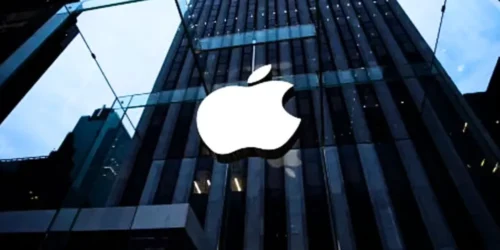It is the most exclusive club in the financial universe. Its members do not trade in stocks or bonds; they trade in dreams. They are not bankers in pinstripe suits; they are kingmakers in Patagonia vests. They do not operate from soaring skyscrapers on Wall Street, but from quiet, unassuming offices on a single street in Silicon Valley called Sand Hill Road. This is the world of venture capital.
To the outside world, venture capital (VC) is a mysterious and mythologized force. We hear the stories: the legendary investor who turned a $500,000 check into a $5 billion return, the prescient partner who saw the future in a couple of kids in a garage and funded the next Google or Facebook. It seems like a world of brilliant hunches, easy money, and world-changing innovation.
The reality is far more complex, far more brutal, and infinitely more interesting. Venture capital is not a get-rich-quick scheme; it is a high-stakes, long-term, and often soul-crushing exercise in managed failure. It is a game of hunting for needles in a continent-sized haystack, of making a handful of audacious bets with the full knowledge that most of them will fail spectacularly. It is a business built not on avoiding risk, but on embracing it with a cold, calculated ferocity.
This is a case study of that game. We will not just define what venture capital is; we will dissect its strange and powerful logic. We will journey into the heart of the VC-founder relationship, a high-pressure marriage of ambition and capital. We will use the story of a single, iconic venture firm—Andreessen Horowitz—to understand how the game is played at its highest level and how it is being reinvented for the 21st century. And we will confront the profound, often uncomfortable, questions this strange form of alchemy raises about innovation, inequality, and the very future of our economy.
This is not a finance story. This is a story about building. It is a story about the unique and volatile partnership between the people who have world-changing ideas and the people who have the capital—and the nerve—to bet on them.
The Anatomy of the Deal – Beyond the Handshake and the Check
To understand venture capital, you must first understand what it is not. It is not a bank. A bank lends you money and wants to be paid back with interest. Its primary concern is managing downside risk. A venture capitalist gives you money and, in return, takes a piece of your company—an equity stake. Their primary concern is maximizing upside potential. They are not lenders; they are co-owners, partners in your dream.
This fundamental difference shapes the entire logic of the VC world. A bank wants to make a hundred loans and have ninety-nine of them pay back. A venture fund will make a hundred investments and be perfectly happy if ninety of them go to zero, as long as one or two of them become massive, world-changing successes. This is the Power Law of Venture Capital, the brutal and beautiful arithmetic that governs the entire industry.
The Machine: How a VC Fund Works
A venture capital firm is not investing its own money. It is a professional manager of other people’s money. The structure works like this:
- The Fundraise: The partners of a VC firm (the “General Partners” or GPs) go out and raise a fund. They pitch to large, sophisticated investors called “Limited Partners” (LPs). These are typically university endowments (like Yale’s or Stanford’s), pension funds, foundations, and wealthy families. The GPs convince the LPs that they have the unique skill, network, and insight to find and invest in the next generation of great technology companies. A fund might be a few hundred million dollars for an early-stage firm or several billion dollars for an established giant.
- The Investment Period: For the next few years, the GPs act as hunters. They are inundated with thousands of pitches from hopeful entrepreneurs. They meet with founders, vet ideas, perform “due diligence” (researching a company’s team, market, and technology), and then place their bets. They might invest in a dozen or so companies out of the thousands they see. Each investment gives the fund an equity stake in the startup.
- The Growth Period: This is where the real work begins. A good VC is not a passive investor. They take a board seat at the companies they fund. They become a strategic partner to the founder. They leverage their network to help the startup hire key talent, find its first major customers, and navigate the treacherous early years. They are part coach, part therapist, part drill sergeant.
- The Harvest: A VC fund typically has a ten-year lifespan. Sometime within that decade, the fund needs to “exit” its successful investments to return capital to its LPs. An exit can happen in two primary ways:
- Acquisition: The startup is bought by a larger technology company (e.g., Google buys a promising AI startup).
- Initial Public Offering (IPO): The startup “goes public,” listing its shares on the stock market, allowing the VC fund (and the public) to sell its shares.
- The Returns: The proceeds from these successful exits are then distributed. The LPs get their original investment back first. Then, the profits are typically split, with the LPs taking 80% and the GPs taking 20%. This 20% cut of the profits is called “carried interest” or “carry,” and it is the primary way that venture capitalists get rich.
The Power Law in Action: The Hunt for the Unicorn
This structure forces a very specific and often counterintuitive investment strategy. Because of the Power Law, VCs are not looking for “good” companies that might provide a modest 2x or 3x return. A handful of modest successes will not be enough to make up for the vast majority of investments that will fail.
VCs are hunting for outliers. They are looking for the rare, mythical creature that can provide a 100x or even a 1,000x return. These are the companies that will not just succeed, but will become market-defining “unicorns” (a term for a private startup valued at over $1 billion). A single investment in a company like Google, Facebook, or Airbnb can return more money than the entire rest of the fund combined, paying for all the failures and still generating massive profits.
This changes everything. It means VCs are incentivized to bet on ideas that are not just plausible, but audacious, world-changing, and even a little bit crazy. A VC would rather invest in a company with a 10% chance of becoming a $100 billion company than a company with a 90% chance of becoming a $50 million company. The second one is a “good” business. The first one is a venture-scale business. This relentless hunt for the outlier is what makes venture capital the great engine of disruption. It is the financial force that funds the long shots, the moonshots, and the ideas that are so crazy they just might work.
The New Kings of Sand Hill Road – The Andreessen Horowitz Revolution
For decades, the world of venture capital was a small, insular, and almost gentlemanly club. The top firms were run by financiers with MBAs who saw themselves as savvy capital allocators. They provided the money and the high-level strategic advice, but they were not, for the most part, builders themselves.
In 2009, two of the most successful entrepreneurs of the internet age, Marc Andreessen and Ben Horowitz, decided to blow up that model.
Marc Andreessen was the wunderkind who, as a college student, had co-created Netscape Navigator, the first widely used web browser. He was a brilliant, polymathic visionary who saw the future with terrifying clarity. Ben Horowitz was the battle-hardened operator, the CEO who had steered their second company, Loudcloud, through the brutal crash of the dot-com bubble, saving it from the brink of bankruptcy. They were not just investors; they were founders. They had been in the trenches.
They launched their new venture capital firm, Andreessen Horowitz (often shortened to “a16z”), with a simple but radical thesis: venture capital firms themselves needed to be run like technology companies. They believed that the old model of a few smart guys with a Rolodex was obsolete. In a world where software was “eating the world,” they argued, founders needed a new kind of partner.
Their innovations completely reshaped the VC landscape.
The VC as a Service Platform
Instead of a small partnership of deal-makers, Andreessen and Horowitz built a fundamentally different kind of organization. They created a massive service platform designed to give their portfolio companies an “unfair advantage” in the marketplace. They hired dozens of specialists, not investors, but full-time partners who were experts in specific operational areas.
- A Recruiting Army: They built a massive in-house recruiting team, a network of top-tier headhunters who could help their startups hire the best engineering and executive talent in Silicon Valley.
- A Marketing and PR Machine: They created a communications and marketing group to help their companies craft their story, get press in top publications, and build their brand.
- A Business Development Network: They built a team dedicated to making high-level introductions for their portfolio companies to potential customers and partners at Fortune 500 companies.
- A Content Factory: This was their most public innovation. Ben Horowitz started a blog that offered brutally honest, practical advice on the gut-wrenching realities of being a CEO. Marc Andreessen became a prolific and provocative voice on Twitter. The firm launched its own podcasts and online publications, bypassing traditional media to communicate its ideas directly to the tech world. They weren’t just investing; they were shaping the entire conversation.
The message to founders was powerful: “We are not just giving you money. We are giving you an entire operational support system. We are the firm that is built to help you build.”
The Founder-Friendly Philosophy
Having been founders themselves, Andreessen and Horowitz brought a new ethos to the VC-founder relationship. They argued that in a great technology company, the visionary founder was the most valuable asset. The traditional VC model, they believed, often sought to “manage” or even replace founders with “professional” CEOs too early.
a16z championed the “founder-led” company. They positioned themselves as fiercely loyal to their founders, providing not just strategic advice but also the psychological support needed to navigate the “struggle” of being a CEO. Ben Horowitz’s book, The Hard Thing About Hard Things, became a bible for a generation of entrepreneurs precisely because it was not about success; it was about the agony of the near-failures, the sleepless nights, and the impossible decisions that define a founder’s journey.
Aggressive, Conviction-Driven Investing
The a16z model was expensive to run. The massive service platform required a huge staff. To pay for this, the firm had to raise massive funds and “deploy” that capital aggressively. They became known for writing large checks, at high valuations, and moving with lightning speed.
They were not afraid to lead a “party round,” where multiple VC firms invested in the same deal, a practice some older firms disdained. They were also willing to make huge, contrarian bets based on deep conviction. Marc Andreessen’s famous 2011 essay, “Why Software Is Eating the World,” was a declaration of their core investment thesis: that software was going to disrupt every major industry, from transportation and hospitality to media and finance.
This philosophy led them to make early, bold investments in companies that would go on to define the next decade of technology: Facebook, Twitter, Airbnb, Stripe, and Coinbase. Their success was staggering, and it forced the entire venture industry to react. The old, quiet firms on Sand Hill Road had to adapt or risk becoming irrelevant. They, too, had to build out their service platforms, become content creators, and compete more aggressively for the best deals. Andreessen Horowitz had not just joined the club; they had rewritten the rules.
The Crucible – The Founder/VC Relationship Under Pressure
The relationship between a founder and their venture capitalist is one of the most unique and intense in the business world. It is a partnership built on a shared dream, but it is also a relationship fraught with inherent tensions. The VC is on the founder’s board. They are a mentor and a partner, but they are also, in a very real sense, the founder’s boss. The VC has a fiduciary duty to its LPs to maximize the return on their investment, and that duty can sometimes clash with the founder’s vision.
This tension comes to a head in two critical, company-defining moments.
The Pivot: The Courage to Abandon the Dream
Almost no startup ends up being the company it started as. The initial idea is often wrong, the market is different from what was expected, or a competitor emerges with a better product. The ability to recognize this and make a “pivot”—a fundamental change in business strategy—is often the difference between life and death.
This is where the VC-founder relationship is truly tested. A good VC will not just provide the capital; they will provide the brutal honesty. They will be the one in the board meeting who has to look the founder in the eye and say, “This isn’t working. Your original dream is dead. We need a new one.”
Consider the story of a company called Odeo. In the mid-2000s, it was a podcasting platform, one of many in a crowded market. The company was struggling, and its investors were getting nervous. The board, including the VCs, held a series of intense, soul-searching meetings. During one of these brainstorming sessions, a quiet engineer named Jack Dorsey pitched a side project he’d been tinkering with: a simple, “micro-blogging” service for posting short, 140-character status updates.
The board and the founders made the gut-wrenching decision to pivot the entire company to this strange new idea. They effectively killed Odeo and relaunched as a new company: Twitter. This was a classic crucible moment, a high-stakes bet that required immense trust and a shared willingness to confront failure head-on.
The Scaling Challenge: When to Hit the Gas
The second great test is the challenge of scaling. Once a company has found “product-market fit” (the point where it has a product that a real market desperately wants), a new set of decisions emerges. The VC will often push the founder to “step on the gas”—to raise huge amounts of new capital and grow as fast as humanly possible to capture the market before competitors can emerge.
This is the “blitzscaling” philosophy, famously championed by Reid Hoffman, the founder of LinkedIn and a partner at the VC firm Greylock. It is a high-risk, high-reward strategy. It can lead to market dominance, as it did for companies like Uber and Airbnb. But it can also be incredibly destructive.
The story of WeWork is the ultimate cautionary tale of blitzscaling gone wrong. WeWork’s founder, Adam Neumann, was a charismatic visionary who sold a grand story about “elevating the world’s consciousness” through shared office space. He was backed by one of the largest venture funds in the world, SoftBank’s Vision Fund, which poured billions into the company, urging it to grow at all costs.
WeWork expanded at a breathtaking, reckless pace. It signed expensive, long-term leases on properties all over the world. But it was burning through cash at an alarming rate. The culture became toxic, and the company’s financials were a mess. When WeWork tried to go public in 2019, public market investors took one look at its astronomical losses and its bizarre corporate governance and balked. The IPO was pulled, the company’s valuation collapsed from $47 billion to under $8 billion, and Adam Neumann was forced out.
The WeWork saga was a brutal reminder that the venture capital model of high-growth, cash-burning blitzscaling does not work for every business. The pressure from VCs to grow at all costs can sometimes push a promising company off a cliff. It highlights the delicate balance a founder must strike between their VC’s appetite for growth and the sustainable, long-term health of their business.
The Great Debate – Is Venture Capital Good for the World?
The success of the venture capital model, particularly as perfected by firms like Andreessen Horowitz, has been undeniable. It has funded the companies that define our digital age and has generated immense wealth for its founders, employees, and investors. But as the influence of these firms has grown, so too has the criticism. A powerful debate now rages about whether the VC engine, in its current form, is a net positive for society.
The Case for VC: The Engine of Innovation
Proponents make a simple and powerful argument: venture capital is the indispensable funding mechanism for true, world-changing innovation.
- Funding the Impossible: VCs are willing to fund the high-risk, radical ideas that no bank or public market would ever touch. Without venture capital, there would be no Google, no Moderna, no SpaceX.
- Driving Productivity and Growth: The technologies funded by VCs have created entirely new industries, boosted economic productivity, and improved the lives of billions of people.
- The Power of the Ecosystem: The venture model creates a powerful, self-reinforcing ecosystem. Successful founders often become “angel investors” or start their own VC funds, recycling their capital and their expertise back into the next generation of startups.
The Case Against VC: The Engine of Inequality and Monopolies
The critics, however, see a much darker side to the story. They argue that the VC model has become a powerful engine for exacerbating inequality and creating harmful monopolies.
- The Homogeneity Problem: For all its talk of funding the future, the VC world remains overwhelmingly white and male. Both the VCs and the founders they fund are disproportionately drawn from a small, elite circle of society (often from a handful of universities like Stanford and MIT). This leads to a massive blind spot, with huge societal problems and promising founders from diverse backgrounds being consistently overlooked.
- The Blitzscaling Monopoly Playbook: Critics argue that the goal of many VC-backed companies is not to build a better product, but to achieve a “winner-take-all” monopoly. The strategy is to use vast sums of venture capital to subsidize prices, drive out all competition, and then, once they are the only game in town, raise prices and extract value. The rise of “gig economy” companies that rely on a precarious workforce of independent contractors is often cited as a negative social consequence of this model.
- The Disconnect from Real-World Problems: The VC world is often accused of living in a Silicon Valley bubble, funding solutions to “problems” that only exist for the wealthy urban elite (e.g., another food delivery app, another social media platform) while ignoring more pressing, fundamental challenges in areas like climate change, manufacturing, and social services.
- Concentration of Power: The success of firms like Andreessen Horowitz has led to a massive concentration of capital and influence in the hands of a few unelected kingmakers. These firms are not just investors; they are powerful lobbyists and narrative-setters who are actively shaping the future with very little public accountability.
Conclusion: The Alchemist’s Burden
The world of venture capital is a world of profound contradictions. It is a system that celebrates failure as a necessary step toward monumental success. It is a partnership that is both deeply collaborative and inherently fraught with tension. It is an engine that has unleashed incredible waves of innovation while simultaneously contributing to some of our society’s most troubling inequalities.
The story of Andreessen Horowitz is the story of this system being perfected and pushed to its logical extreme. They took the old, clubby model of venture capital and transformed it into a scalable, aggressive, and incredibly powerful platform. In doing so, they not only generated historic returns but also forced the entire industry to evolve, for better and for worse.
The game of venture capital is not for the faint of heart. It is for the dreamers, the builders, the iconoclasts, and the slightly mad. It is for those who are willing to bet everything on a future that does not yet exist. The alchemy they practice—turning capital and ambition into world-changing companies—is one of the most powerful forces shaping our modern world.
The great challenge for the next generation of founders and funders is to reckon with the alchemist’s burden. Can this incredible engine of innovation be harnessed to solve a broader set of human problems? Can the club be opened up, its opportunities made more accessible to a more diverse group of dreamers? Can we find a way to balance the relentless pursuit of hyper-growth with the need for sustainable, equitable, and humane progress?
The future is unwritten. The next great pitch is being prepared in a dorm room or a coffee shop somewhere right now. The VCs are waiting, checkbooks at the ready, hunting for that one audacious idea that will justify all the failures. The beautiful, brutal game goes on.













